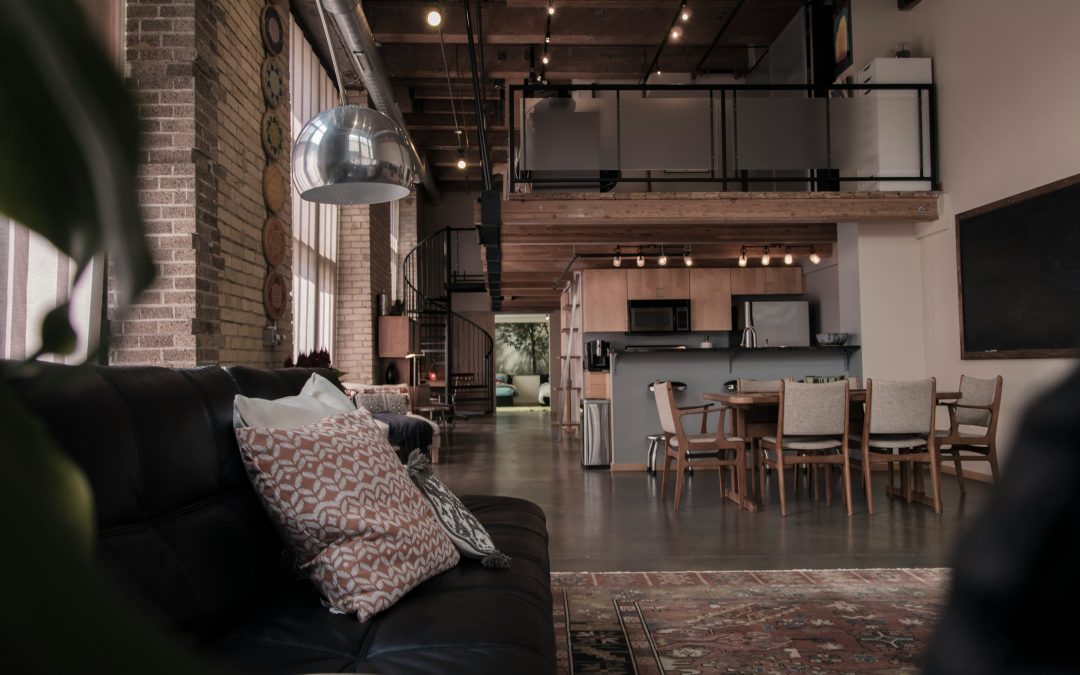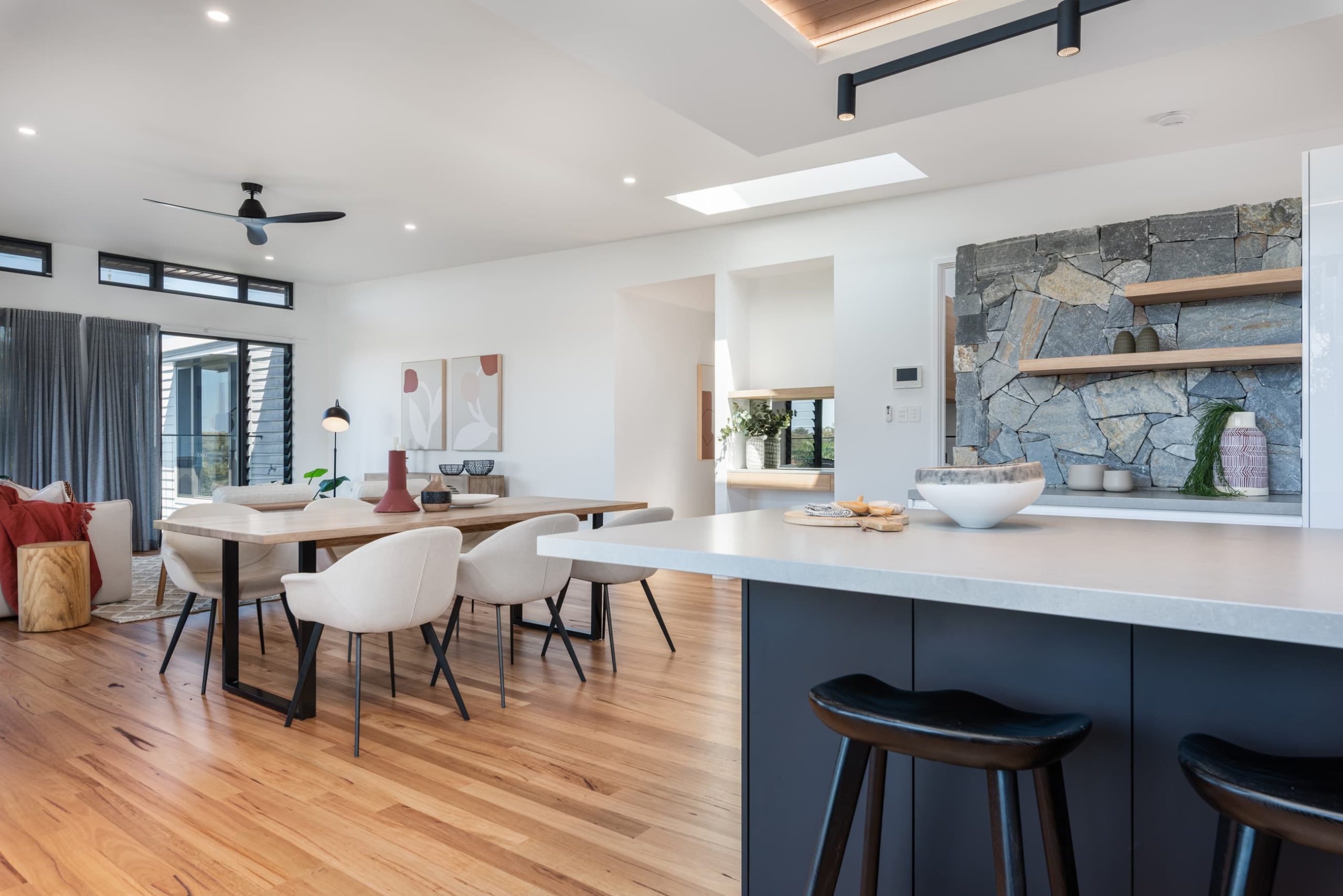Often asked…what is industrial design all about?
This design concept has garnered attention in recent years in both residential and commercial projects. Partly due to the focus on natural materials and raw unprocessed features, the ‘industrial look’ can sometimes be misunderstood. It is important for modern designers to avoid the creation of a hard, cold and unwelcoming feel to their project.

Contemporary industrial design office space
Originally inspired by industrial buildings featuring exposed pipes, concrete, brick and lots of open space with natural light, industrial interior design has morphed into its own style. The design typically includes a neutral colour palette of blacks, greys and whites, sometimes softened by brick or timber and the use of materials in their rawest form. Minimalism sets the tone to allow the natural features of exposed beams, ducting, pipes and natural light to come to the fore.

Typical industrial style – neutral palette, exposed beams, polished concrete floor softened by brick walls
Polished concrete floors, metal detailing and reclaimed wood are just of few of the basic inclusions of ‘industrial design’…. along with very ‘high’ ceilings.
Below is a recap of the basic elements of industrial design to achieve the look you may be after:
- Visible structural elements such as exposed brick walls, exposed beams, or open ductwork
- Rough wood or concrete floors
- Neutral colour palette with an emphasis on darker tones such as blacks, greys, and whites
- Repeated use of raw materials, usually leather and wood in chairs, tables, sofas, and other home decor items
- Emphasis on steel and dark metal, both structurally in beams and columns and in decoration, furniture, fixtures, and artwork
- High ceilings
- Large windows
- A minimalist spirit—excessive ornamentation and detailing is not often found in industrial spaces

Industrial style kitchen

